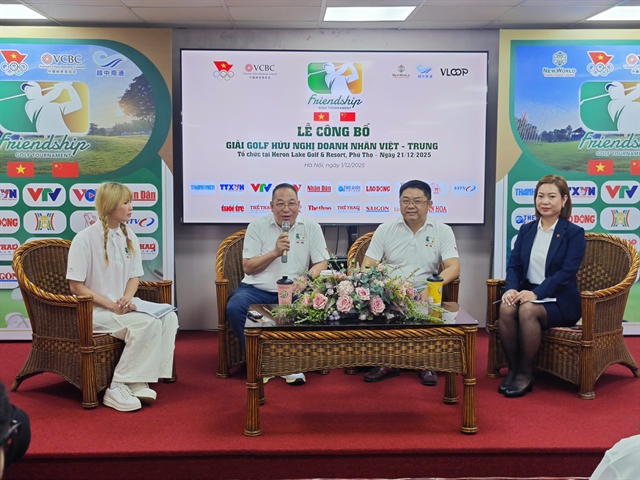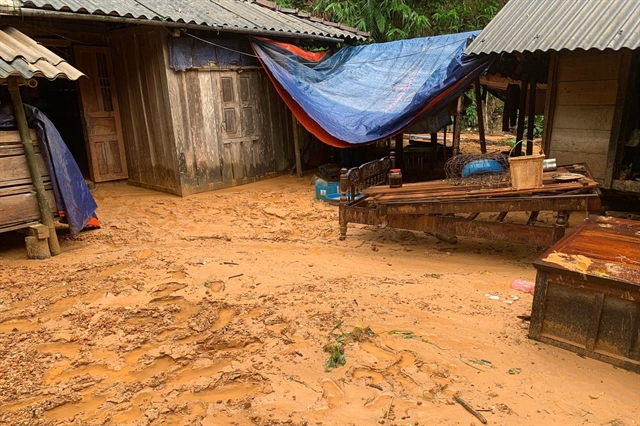 Society
Society


|
| Heavy rain caused a landslide that pushed mud into a house in a mountainous commune of Quảng Trị Province. VNA/VNS Photo |
HÀ NỘI – Severe rainfall and rising floods had forced the evacuation of 7,253 households, totalling 22,080 people, to safe locations in central Việt Nam by 17.30 on October 29, according to the Vietnam Disaster and Dyke Management Authority under the Ministry of Agriculture and Environment.
Among the affected areas, Quảng Trị Province evacuated 137 households (385 people), Huế 1,759 households (4,557 people), Đà Nẵng 4,835 households (15,886 people), Quảng Ngãi 368 households (645 people), and Lâm Đồng 154 households.
Floods have submerged 2,535ha of rice and crops in Lâm Đồng, Đà Nẵng and in Quảng Trị, and damaged 549ha of fruit trees in Lâm Đồng. Fifty houses collapsed or were washed away in Đà Nẵng, while 110 houses were damaged and 127,594 homes flooded across Quảng Trị (663), Huế (44,507), Đà Nẵng (76,427), Quảng Ngãi (4,948), and Lâm Đồng (1,049). A total of 81 communes and wards were affected, with water depths ranging from 0.2 to 2m in some areas.
The floods have also claimed 16 lives or left people missing. Approximately 9,450 livestock and poultry have died or been swept away.
Floods and landslides have blocked 11 national highways and many provincial roads across central Vietnam, causing major transport disruptions. Quảng Trị, Huế, Đà Nẵng, and Quảng Ngãi reported numerous landslides, damaged roads, and disrupted railway services, including suspension of multiple SE and HD passenger trains.
On October 29, Party General Secretary Tô Lâm sent a letter encouraging citizens and officials involved in disaster relief. On the same day, Prime Minister Phạm Minh Chính chaired an online meeting with ministries and provincial authorities from Quảng Trị to Quảng Ngãi to direct flood response and recovery efforts, with Deputy Prime Minister Trần Hồng Hà joining from Huế.
The Prime Minister also approved VNĐ350 billion (US$13.6 million) in emergency aid to Huế, Quảng Trị, and Quảng Ngãi to support recovery and stabilise local livelihoods. Authorities continue to assess damage and implement recovery measures. VNA/VNS



 Ảnh JP Morgan.png)
